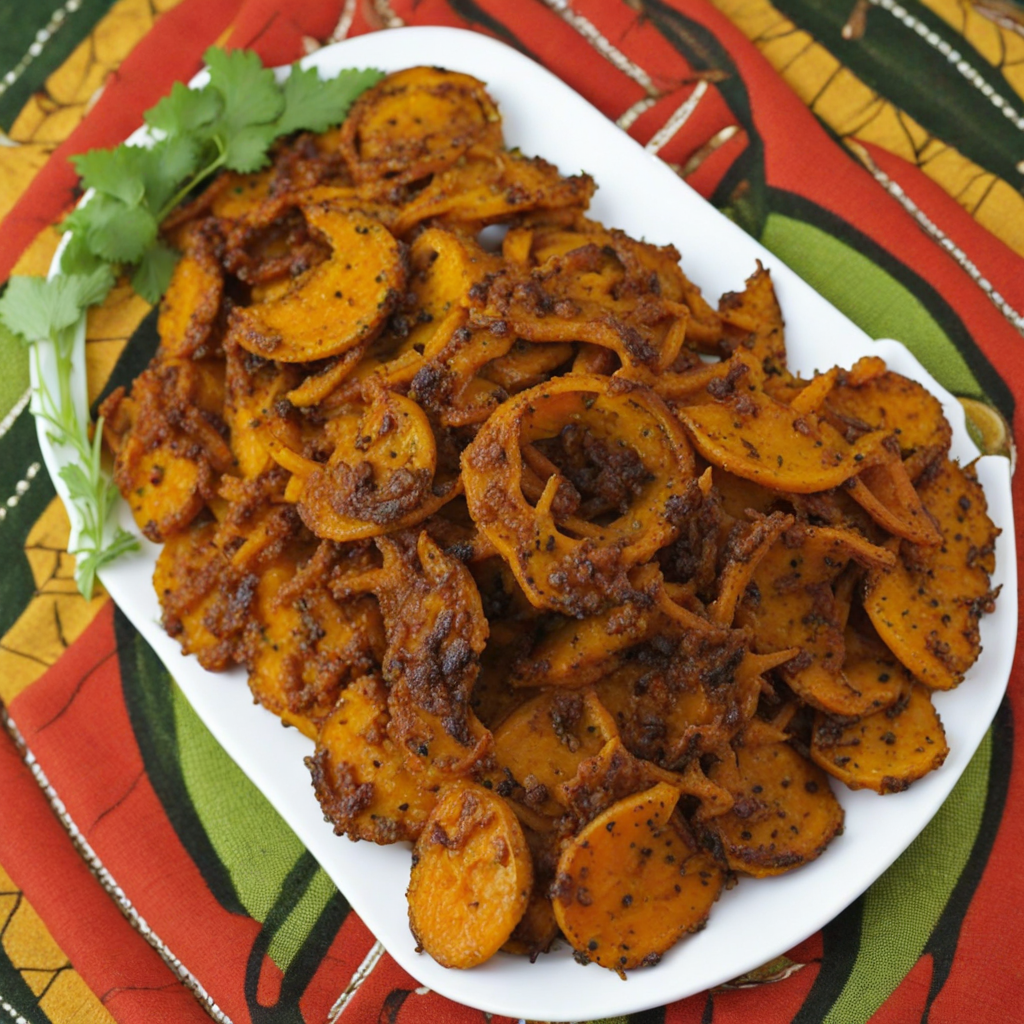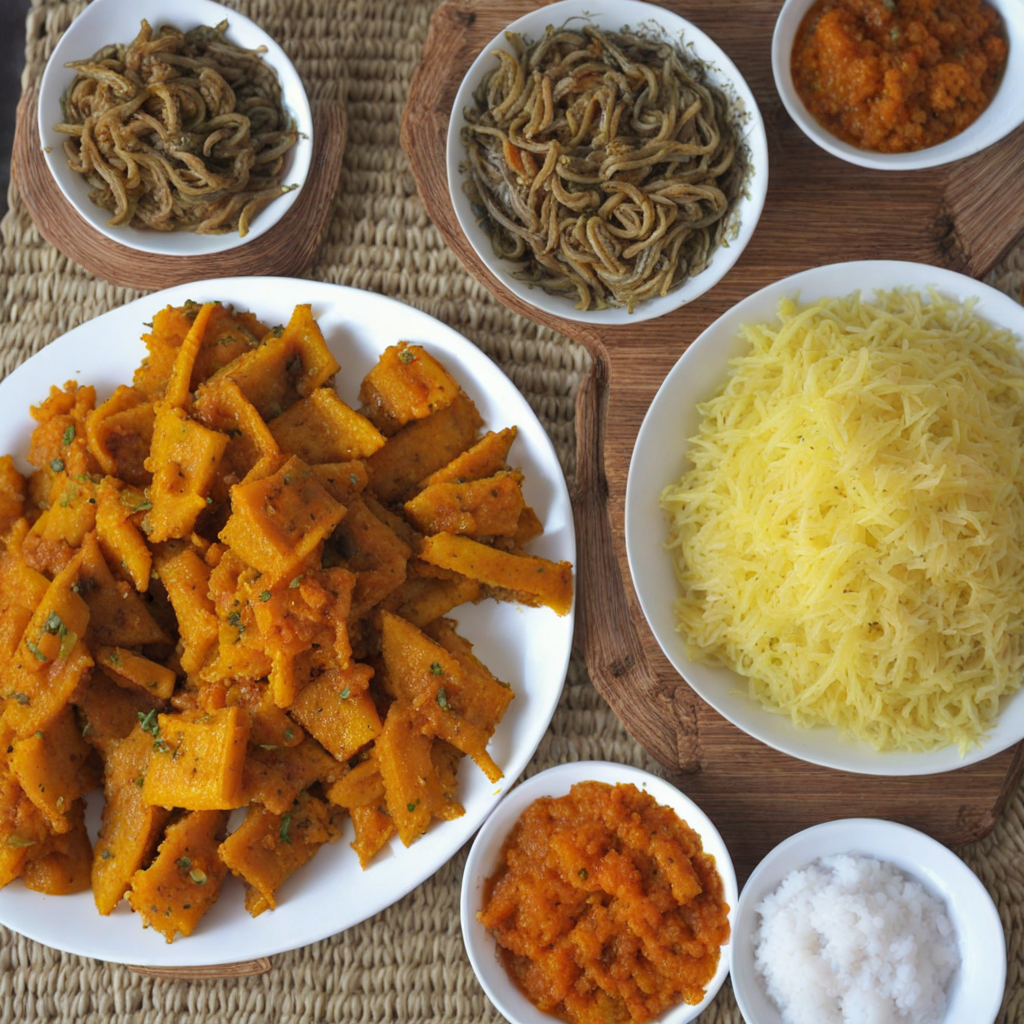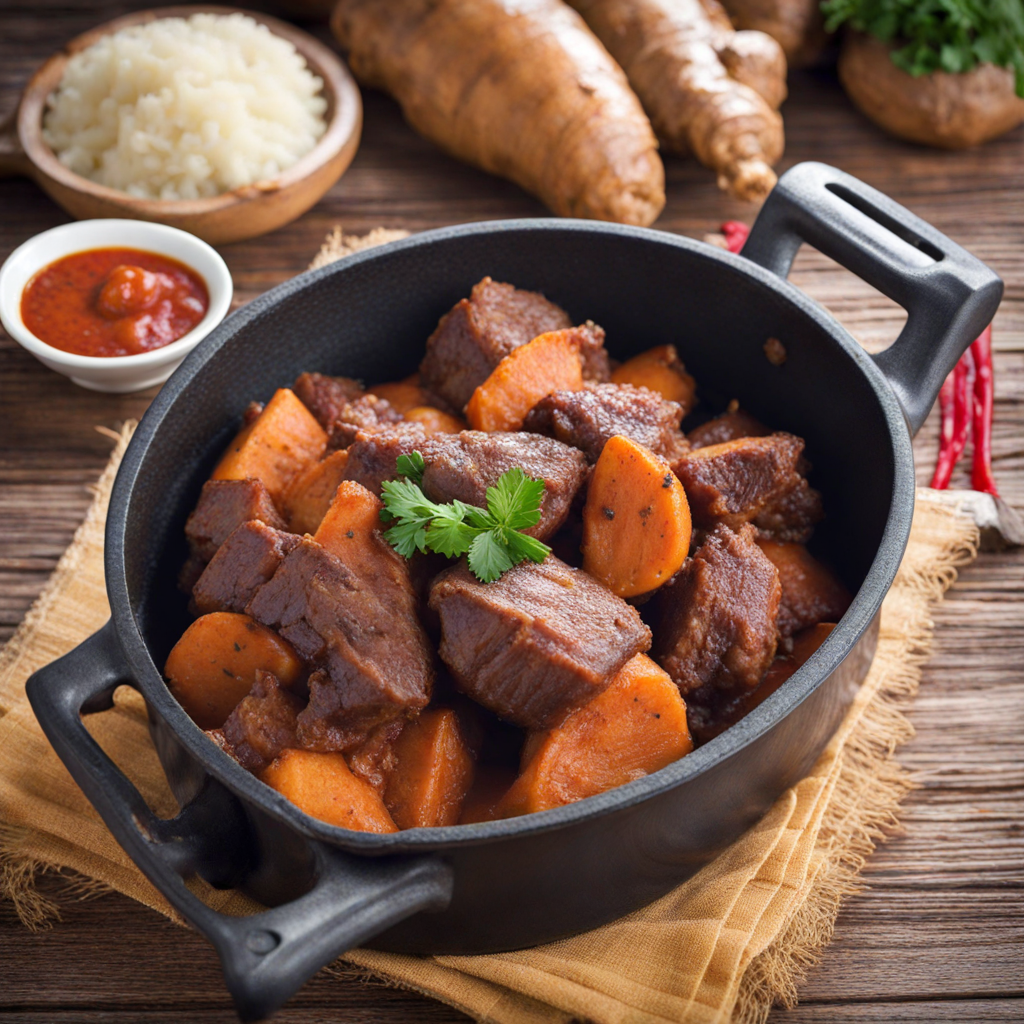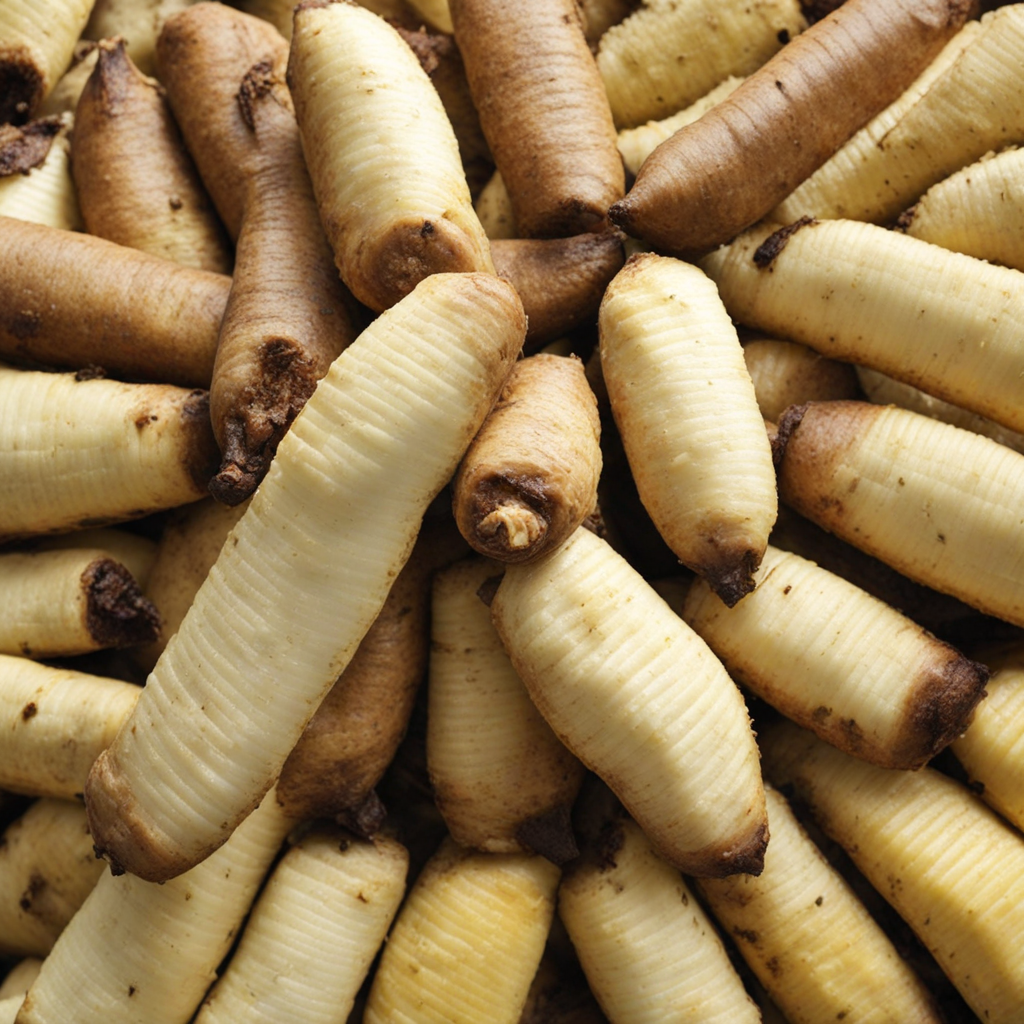Ibihaza bisese
Ibihaza bisese is a traditional Rwandan dish that highlights the rich agricultural heritage of the country, primarily featuring pumpkin as its star ingredient. This dish is typically made with the flesh of the pumpkin, which is cooked until tender and then mashed or pureed to create a creamy, flavorful base. The dish often incorporates local spices and seasonings, enhancing the natural sweetness of the pumpkin. The smooth texture and vibrant orange color of Ibihaza bisese make it not only a delight for the palate but also a visually appealing addition to any meal. In addition to pumpkin, Ibihaza bisese can include various legumes such as beans or groundnuts, which add protein and a nutty flavor that complements the sweetness of the pumpkin. The combination of these ingredients not only makes for a nutritious dish but also brings a depth of flavor that is both comforting and satisfying. This dish is often served as a side or a main course, and it pairs wonderfully with staples like rice or ugali, allowing for a balanced and hearty meal. What makes Ibihaza bisese truly unique is its connection to Rwandan culture and communal eating practices. Traditionally, this dish is enjoyed during gatherings and celebrations, embodying the spirit of togetherness that is central to Rwandan life. The process of preparing Ibihaza bisese is often a communal effort, with family and friends coming together to share in the cooking and enjoyment of the meal. For those looking to explore new tastes, Ibihaza bisese offers a delicious glimpse into the flavors of Rwanda, inviting you to savor the simplicity and richness of its ingredients.
How It Became This Dish
Ibihaza Bisese: A Culinary Journey Through Rwandan History Ibihaza bisese, a traditional Rwandan dish made primarily from pumpkin and sometimes combined with other vegetables and starches, encapsulates the rich agricultural heritage and cultural identity of Rwanda. This dish not only nourishes the body but also connects people to their history, community, and environment, making it a significant staple in Rwandan cuisine. #### Origins and Ingredients The origins of ibihaza bisese can be traced back to the agricultural practices of the Rwandan people, particularly centered around the cultivation of indigenous crops. Pumpkins, which are the star ingredient of this dish, have been grown in the region for centuries. The fertile volcanic soils of Rwanda provide an ideal environment for growing a variety of crops, including sweet potatoes, beans, and maize, which are often found in conjunction with pumpkins. Historically, the Twa, Hutu, and Tutsi communities, the three main ethnic groups in Rwanda, have practiced agriculture as a means of sustenance and trade. Crops like pumpkins were not only a source of food but also held cultural significance, often being associated with harvest festivals and communal gatherings. The process of growing, harvesting, and preparing ibihaza bisese reflects the deep-rooted connection between the Rwandan people and their land. #### Cultural Significance Ibihaza bisese holds a special place in Rwandan culture. The dish is often prepared during celebrations, family gatherings, and significant events. Its preparation is more than just cooking; it is an opportunity for families to come together, share stories, and strengthen communal bonds. The act of cooking ibihaza bisese often involves multiple generations, where knowledge is passed down from elders to the younger members, ensuring that traditions are preserved. In Rwandan society, food is a symbol of hospitality and kinship. Serving ibihaza bisese to guests is a way of honoring them, as it demonstrates the host's willingness to share their resources and culture. The dish is also commonly featured during national events, promoting a sense of unity among Rwandans. Additionally, ibihaza bisese reflects the Rwandan ethos of sustainability. The use of seasonal, locally sourced ingredients aligns with traditional agricultural practices that prioritize environmental stewardship. This dish can be seen as a celebration of biodiversity, as it often includes various vegetables that complement the pumpkin, showcasing the region's rich agricultural diversity. #### The Evolution of Ibihaza Bisese Over time, ibihaza bisese has evolved, adapting to changes in agricultural practices, culinary trends, and societal shifts. In pre-colonial Rwanda, the dish was primarily prepared with ingredients that were readily available and in season. With the arrival of European colonial powers, new ingredients and cooking techniques were introduced, influencing local cuisines. However, the essence of ibihaza bisese remained intact, as it continued to be a staple in rural households. In the post-colonial era, particularly after the Rwandan Genocide in 1994, there has been a resurgence of interest in traditional foods as a means of reclaiming cultural identity. The revival of interest in indigenous crops has led to a newfound appreciation for dishes like ibihaza bisese. Efforts to promote local cuisine and agricultural practices have been initiated by various organizations, emphasizing the importance of food sovereignty and the preservation of Rwandan culinary heritage. Modern interpretations of ibihaza bisese have emerged, with chefs experimenting with flavors and presentation while respecting traditional methods. Contemporary Rwandan cuisine often incorporates elements from global culinary trends, but dishes like ibihaza bisese remain popular for their authenticity and connection to the past. Urbanization has also influenced how the dish is prepared and consumed, with many city dwellers seeking to reconnect with their roots through traditional foods. #### Ibihaza Bisese in Contemporary Rwanda Today, ibihaza bisese is not only cherished in homes but is also gaining recognition in restaurants and food festivals across Rwanda. The dish is often featured in culinary events that celebrate Rwandan culture, attracting both locals and tourists alike. This visibility has helped to elevate the status of traditional dishes, encouraging a younger generation to take pride in their culinary heritage. Moreover, the popularity of ibihaza bisese has sparked interest among health-conscious consumers. With the global trend towards plant-based diets, the dish's reliance on wholesome, natural ingredients has made it appealing to those seeking healthier food options. This shift has encouraged more farmers to grow pumpkins and other local vegetables, thus supporting sustainable agriculture and local economies. #### Conclusion Ibihaza bisese is more than just a dish; it is a symbol of Rwandan heritage, resilience, and community. Its history is deeply intertwined with the agricultural practices and cultural traditions of the Rwandan people, reflecting the values of sustainability and hospitality that are central to Rwandan society. As Rwanda continues to navigate the complexities of modernity while honoring its past, ibihaza bisese stands as a testament to the enduring power of food to connect individuals to their roots and to each other. In a world increasingly driven by globalization and fast food, traditional dishes like ibihaza bisese remind us of the importance of our culinary heritage. They invite us to savor not only the flavors but also the stories and traditions that have shaped our communities. As Rwandans continue to celebrate and innovate around this classic dish, ibihaza bisese will undoubtedly remain a cherished part of Rwanda’s culinary narrative for generations to come.
You may like
Discover local flavors from Rwanda







